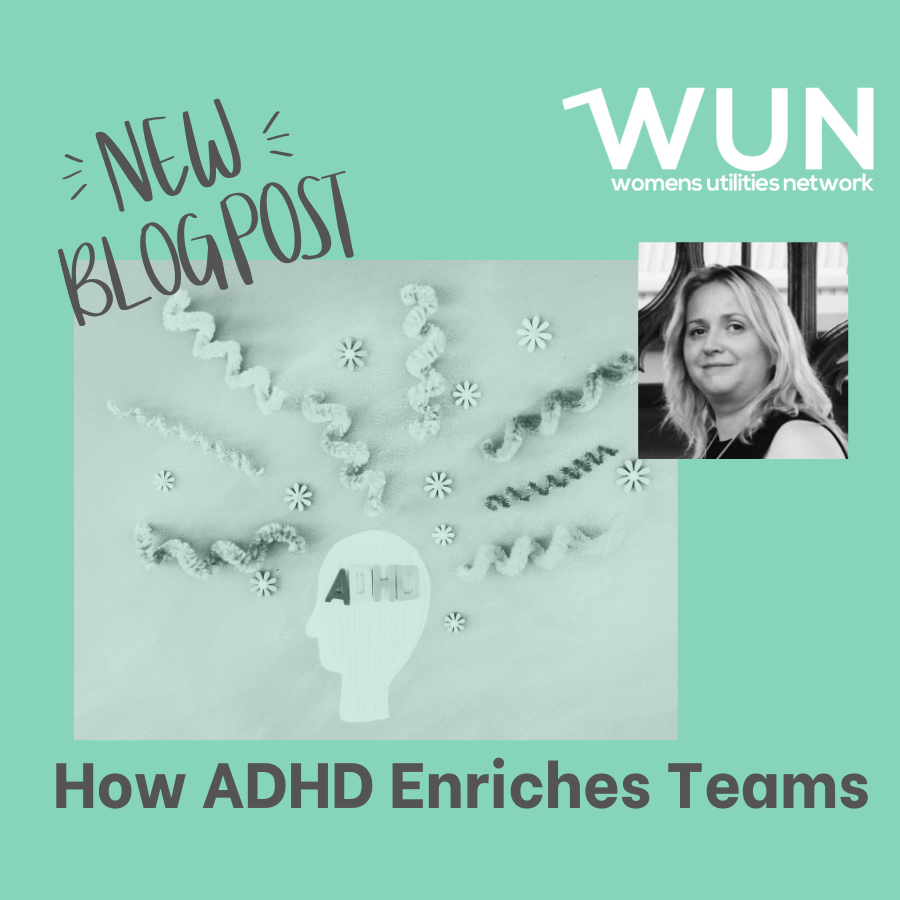How ADHD Enriches Teams

October marks ADHD Awareness Month, a time to celebrate neurodiversity and reflect on how conditions like Attention Deficit Hyperactivity Disorder (ADHD) shape the way people think, work, and contribute to teams.
What Is Neurodiversity?
Neurodiversity refers to the natural variation in how people’s brains function. It includes ADHD, autism, dyslexia, dyspraxia, and more. ADHD or Attention Deficit Hyperactivity Disorder, is a neurodevelopmental condition that affects how people focus, manage impulses, and regulate energy levels. People with ADHD may experience inattention, hyperactivity and impulsivity. These differences are not deficits; they’re diverse ways of experiencing and solving problems. In the UK, it’s estimated that 3–4% of adults have ADHD, though many remain undiagnosed, especially women and people from Global Majority backgrounds, due to outdated stereotypes about what ADHD “looks like”.
Official figures show that since the pandemic, the number of people in work with disabilities or long-term health conditions in the UK has risen by 21 percent. The number of workers with cognitive diversity such as ADHD has increased by 35 percent over the same period.
Much of the increase is driven by late diagnoses in adulthood, particularly among women, who were historically underdiagnosed in childhood. It’s also reflected in the younger population: the number of disabled children with ADHD as their primary condition has grown from 38,000 in 2013 to 66,000 in 2023, figures from the Office for Budget Responsibility show.
NHS data suggests that more than 800,000 people in England now have a formal ADHD diagnosis, but estimates suggest as many as 2.5 million may be living with the condition. A significant number remain undiagnosed or are on lengthy waiting lists for assessment.
How ADHD Enriches Teams
People with ADHD often bring unique strengths to the workplace. Their ability to think outside the box, adapt quickly to change, and hyperfocus on tasks they find engaging can be a major asset to teams. In fast-paced environments, they often thrive by generating creative solutions, energising colleagues, and spotting connections others might miss. When supported with inclusive practices, like flexible working, clear communication, and strengths-based development ADHD can become a powerful driver of innovation and collaboration. Recognising these contributions helps build a workplace where neurodiversity is not just accepted but celebrated. These strengths can be transformative when workplaces are inclusive.
What’s Holding Us Back?
According to a recent Acas survey, 72% of line managers said neurodivergent employees often don’t disclose their condition, fearing stigma or misunderstanding. Nearly half cited a lack of organisational knowledge about neurodiversity. This silence can lead to missed opportunities for support, growth, and retention. Real inclusion means talking and listening.
What Can We Do?
Here are practical steps to support ADHD and neurodiversity in the workplace:
• Is your working environment a safe place for disclosure, without pressure.
• Do you offer support based on need, not just formal diagnosis? This shift to a needs-led model allows employers to act proactively, offering tools like noise-cancelling headphones, quiet zones for focus and decompression, speech-to-text software, time management tools, screen readers and coloured overlays for dyslexia.
• Are your working arrangements flexible without waiting for clinical confirmation.
• Do you utilise strengths-based development: Do you know what energises your team members, and are roles built around that.
• Do you challenge myths and stereotypes and call out unhelpful and outdated rhetoric: ADHD isn’t just about distraction, it’s about difference.
• Do you encourage and participate in a culture of celebrating contributions: Recognise the value neurodivergent colleagues bring.
How Can I Help?
As the data mentioned above suggests, many people who have gone previously undiagnosed, may now be investigating the natural variations in their ways of thinking, or be on the (sometimes long and arduous) journey to diagnosis. For a lot of people this can be a lengthy and highly emotionally charged process that could be leaving our colleagues physically and mentally depleted. Similarly, those with children and family members going through diagnosis and accessing support may well be suffering stresses at home. Notice your colleagues and have the brave conversations – offer a listening ear if something seems off or alert a line manager or HR if you are concerned.
Final Thought
Neurodiversity isn’t a challenge to manage; it’s a strength to embrace. By recognising and supporting ADHD in the workplace, we unlock creativity, innovation, and a more inclusive culture for everyone.
Gill Edwards, WUN Advocate, skewb.
Further resources:
Neurodivergent workers up 35% as woman wins ADHD tribunal case
The UK ADHD Task Force Interim Report: Four Wins And Two Blind Spots
ADHD Foundation – The Neurodiversity Charity